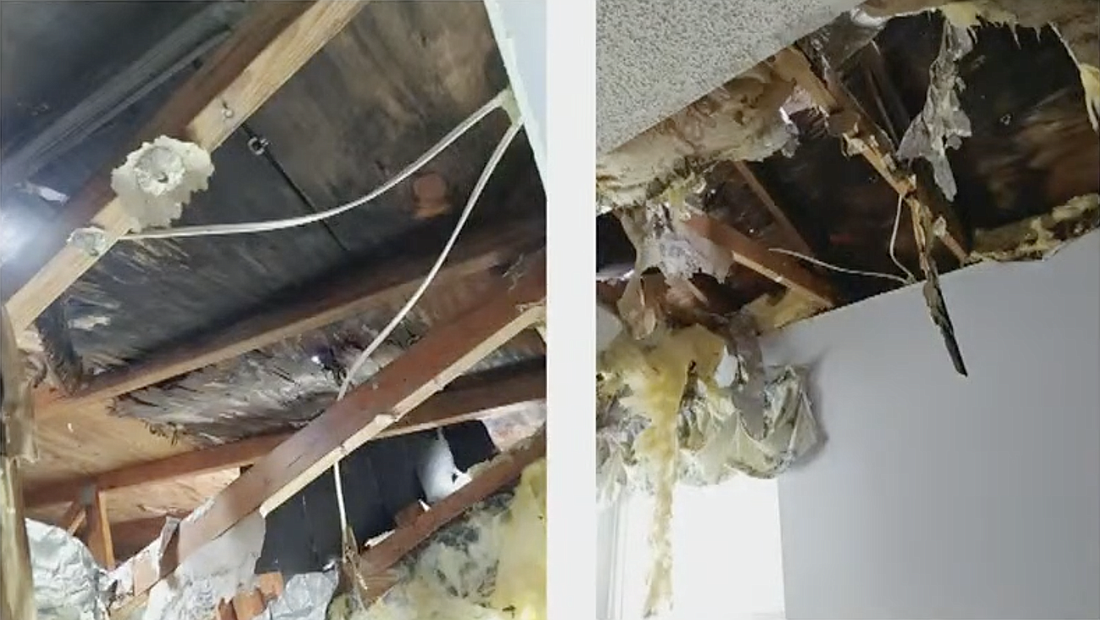- April 24, 2024
-
-
Loading

Loading

A Palm Coast resident whose B Section home was damaged by a tree falling into the roof more than two years ago has requested $163,364 from federal funds to assist roof replacement, heating, ventilation, and air conditioning systems, new doors and windows, and other rehabilitation work to address health and safety issues. The funds come from two sources, one controlled by the city of Palm Coast, the other by Flagler County, and both municipalities approved an increase to the maximum allowed — normally capped at $100,000 total — to help the resident.
The City Council approved its half of the amount requested, a Community Development Block Grant, at the business meeting on May 17. Jose Papa, the city’s senior planner, said on May 10 that the Local Housing Assistance Plan, which was adopted by the City Council in 2013, establishes a maximum limit of $50,000 per housing unit to meet the needs of very low- and moderate-income households and to expand the production of affordable housing.
The County Commission approved its half from the Flagler County SHIP Program (State Housing Initiatives Partnership) on the consent agenda on May 16.
The city will also provide, through CDGB, $3,000 to make a temporary living arrangement.
City Council member Nick Klufas said, “I think that this is absolutely causing blight in the area. I'm sure that the neighborhood is impacted by this residence.”
He then asked Papa how long construction would take, suggesting that $3,000 might only be enough to cover the homeowner’s living arrangements for about two months.
Papa said the construction was estimated to take six months. “We ask the homeowner to find their accommodations,” he added.
After receiving the federally funded home improvements, the homeowner would not be able to sell the home without penalty for five years. After that, there would be a penalty, in decreasing amounts, for five more years.
“There is a 10-year clawback period for the city and the program,” Papa said.
City Council Member John Fanelli asked whether it was worth spending so much money to fix the home in the first place.
“A hundred and sixty-three thousand dollars is a lot of money,” he said. “Is there a recovery point where the home is in such disrepair that it is not worth investing that sum of money?”
If the home repairs are going to exceed 50% of the home value, CDBG recommends demolishing the home and building a new one, Papa said. When the repairs are finished, the home is expected to be worth over $320,000.
Mayor David Alfin asked whether this would set a precedent, and Papa acknowledged this was only the second time an expenditure of this amount had been approved.
Last year, the SHIP program received $350,000; this year, it will receive $1 million, Papa said. The majority of the funds are spent in the city of Palm Coast.
“The funds that are coming down are federal dollars, so there's no local impact on the community,” Fanelli pointed out, and Papa concurred, adding that all applicants who qualified this year received funding.
“All of the improvements are health and safety improvements,” Papa said. “We are not putting granite counter tops in the home as part of this program, we are just bringing it up to a habitable condition.”
During the program, there will be a mortgage put on the home, and there will be required insurance once the CDBG completes the work.
“It’s definitely going to be a lifesaver for the resident,” Klufas said.
“Not only the resident will be benefiting, but the neighborhood, I'm sure, will also benefit,” Alfin said.
Brian McMillan contributed to this story.